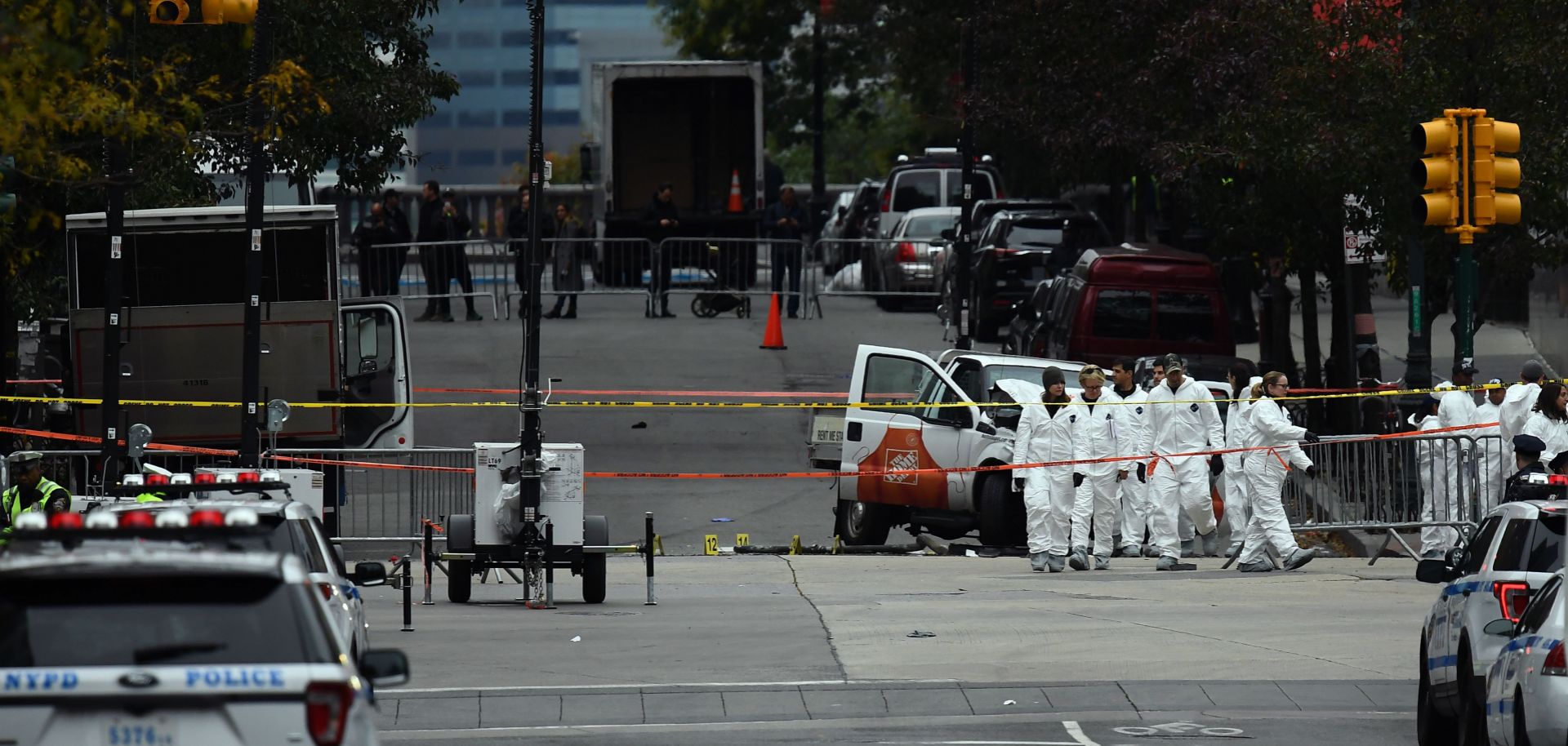ASSESSMENTS
How One Region's Gains Are Another's Tragedy
Nov 2, 2017 | 21:01 GMT

A Home Depot pickup truck that was used to plow into bicyclists on Oct. 31 sits wrecked in New York City. The attack was conducted by an Uzbek national who had been radicalized by the Islamic State after moving to the United States on a diversity visa.
(JEWEL SAMAD/AFP/Getty Images)
Highlights
- Security crackdowns in Central Asia have driven many militants — and people susceptible to militancy and radicalization — away from the region and to more lax security environments, be they conflict zones in Syria, Iraq and Afghanistan, or more open communities in Europe and the United States.
- Other Central Asian migrants have been radicalized abroad. Understanding that trend will require a nuanced view of the personal experiences of militants and how those experiences relate to their home countries and cultures and to those they attack.
- Central Asian nationals will continue to conduct and participate in terrorist attacks abroad, particularly unsophisticated soft-target attacks such as those conducted in New York and Stockholm.
Subscribe Now
SubscribeAlready have an account?
